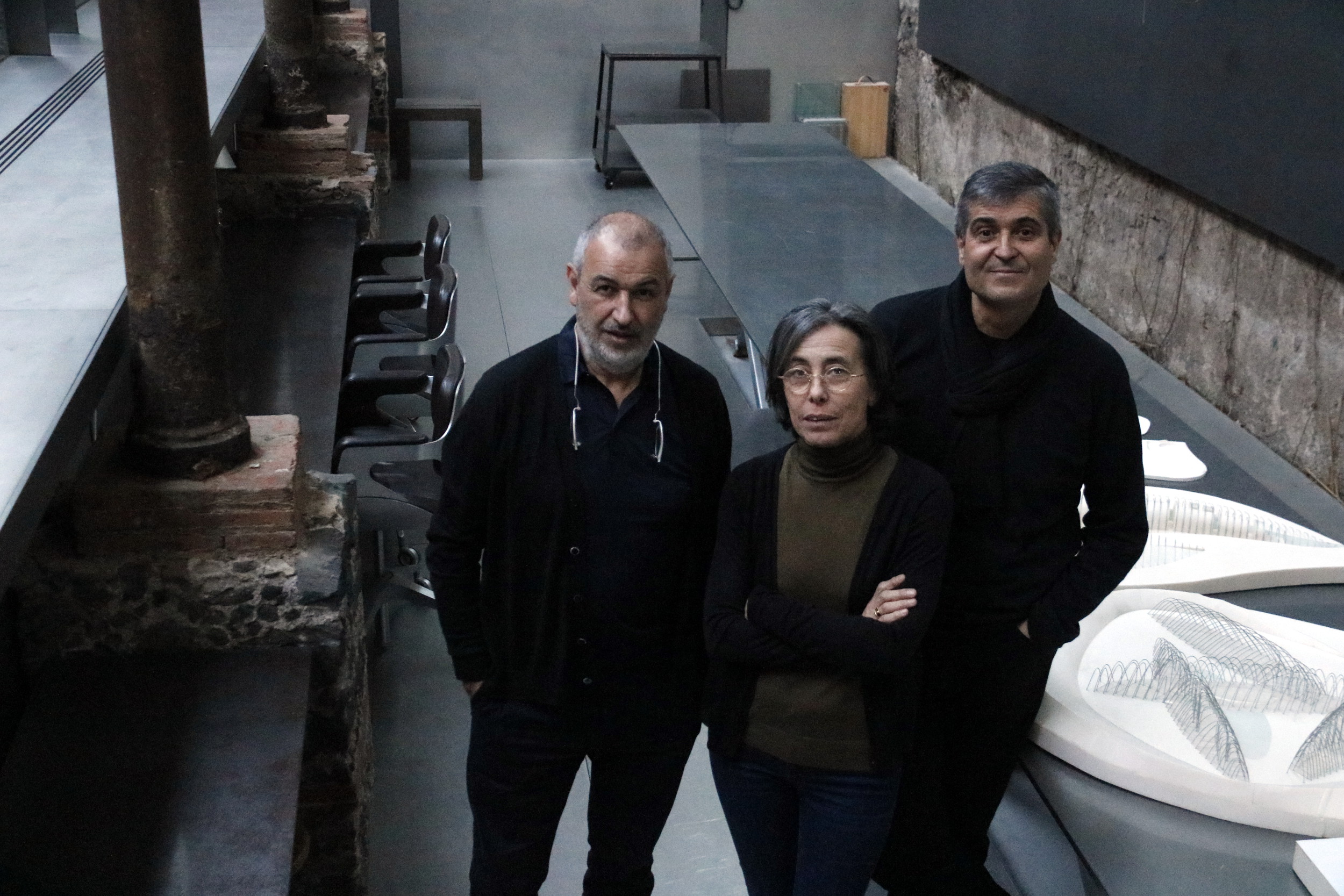Catalan firm RCR wins Pritzker Prize, considered architecture’s highest honour
'RCR' Arquitectes, a studio based in the small village of Olot, 100 kilometres north of Barcelona, has been awarded the 2017 Pritzker Architecture Prize. The three locally-based architects, Rafael Aranda, Carme Pigem and Ramon Vilalta are the first to share the prize, which is known internationally as architecture’s highest honour. “This is a dream we would have never dared to dream of”, stated Pigem. During its 30-year history, 'RCR Arquitectes' has carried out more than 60 singular projects, mainly in Catalonia but also in France and Belgium. Tom Pritzker, Chairman of the Hyatt Foundation, considered the winners’ work to have “had an impact on the discipline far beyond their immediate area” with projects ranging from public and private spaces to cultural venues and educational institutions. “They’ve demonstrated that unity of material can lend such incredible strength and simplicity to a building,” said Glenn Murcutt, Jury Chair.

Olot (CNA).-Catalan architects Rafael Aranda, Carme Pigem and Ramon Vilalta, who set up 'RCR Arquitectes' in 1988, have won the 2017 Pritzker Prize, which is considered the ‘Nobel Prize’ of the architecture world. “This is a dream we would have never dared to dream of”, stated Pigem. The locally-based architects, which founded the studio in Olot, a village 100 kilometres north of Barcelona evoke universal identity through their creative and extensive use of modern materials including recycled steel and plastic. According to Tom Pritzker, Chairman of the Hyatt Foundation, the laureates’ work has “had an impact on the discipline far beyond their immediate area” with projects ranging from public and private spaces to cultural venues and educational institutions. This is the first time that three architects together are to be awarded the prize, which is considered internationally as architecture’s highest honour.
“It is a great joy and a great responsibility”, said Pigem. “We are thrilled that this year three professionals, who work closely together in everything we do, are recognised”. “I think the jury appreciated that universal messages could be sent from the roots, from a small location such as Olot”, Rafael Aranda told the CNA. During its 30-year history, 'RCR Arquitectes' has carried out more than 60 singular projects, mainly in Catalonia but also in France and Belgium. Their latest work is a block of apartments in Dubai. The three architects hope that the award will help them to work “better, with more time and dedication”.
Amongst their most outstanding projects are the ‘Waalse Krook’ media library in Gent, the arts centre ‘La Cuisine’ in Nègrepelisse Castle, in France, and many others in Catalonia, such as the restaurant ‘Les Cols’ in Olot and the Sant Joan Antoni-Joan Oller library, in Barcelona.
Aranda, Pigem and Vilalta will receive the award on the 20th of May, at a ceremony to be held in Tokyo. “Until then, we’ll try to settle down and enjoy this recognition as much as we can”, said Vilalta.
The importance of collaborative work
The Pritzker Prize Jury felt that the work of RCR unveils commitment to place and its narrative, to create spaces that are in discourse with their respective contexts. “Harmonising materiality with transparency, Aranda, Pigem and Vilalta seek connections between the exterior and interior, resulting in emotional and experiential architecture”, said the Jury.
“The jury has selected three architects who have been working collaboratively for nearly three decades”, the Pritzker Jury remarked and emphasised that “their ability to intensely relate the environment specific to each site is a testament to their process and deep integrity”.
The locally-based architects evoke universal identity through their creative and extensive use of modern materials including recycled steel and plastic. “They’ve demonstrated that unity of material can lend such incredible strength and simplicity to a building,” said Glenn Murcutt, Jury Chair. “The collaboration of these three architects produces uncompromising architecture of a poetic level, representing timeless work that reflects great respect for the past, while projecting clarity that is of the present and the future”.